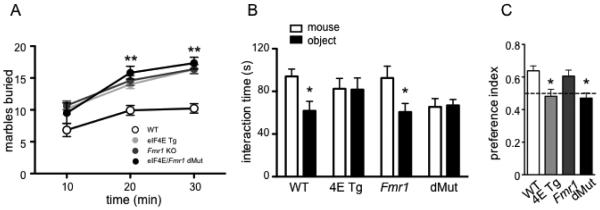Figure 2. eIF4E/Fmr1 double mutant mice show repetitive behaviors and impairment in social interaction.
(A) Cumulative data of the number of marbles buried in 10-min intervals (**p < 0.01). (B) Time spent interacting with either the stranger mouse or inanimate object in the three-chambered arena test (*p < 0.05) and (C) preference index calculated as time of interaction with the stranger mouse over the total interaction time with either the mouse or the object (*p < 0.05). Data are represented as the mean ± SEM (n = 8-12). WT, 4E Tg, Fmr1 and dMut denote wild-type, eIF4E transgenic, Fmr1 knock-out and eIF4E/Fmr1 double mutant mice, respectively (B, C).

